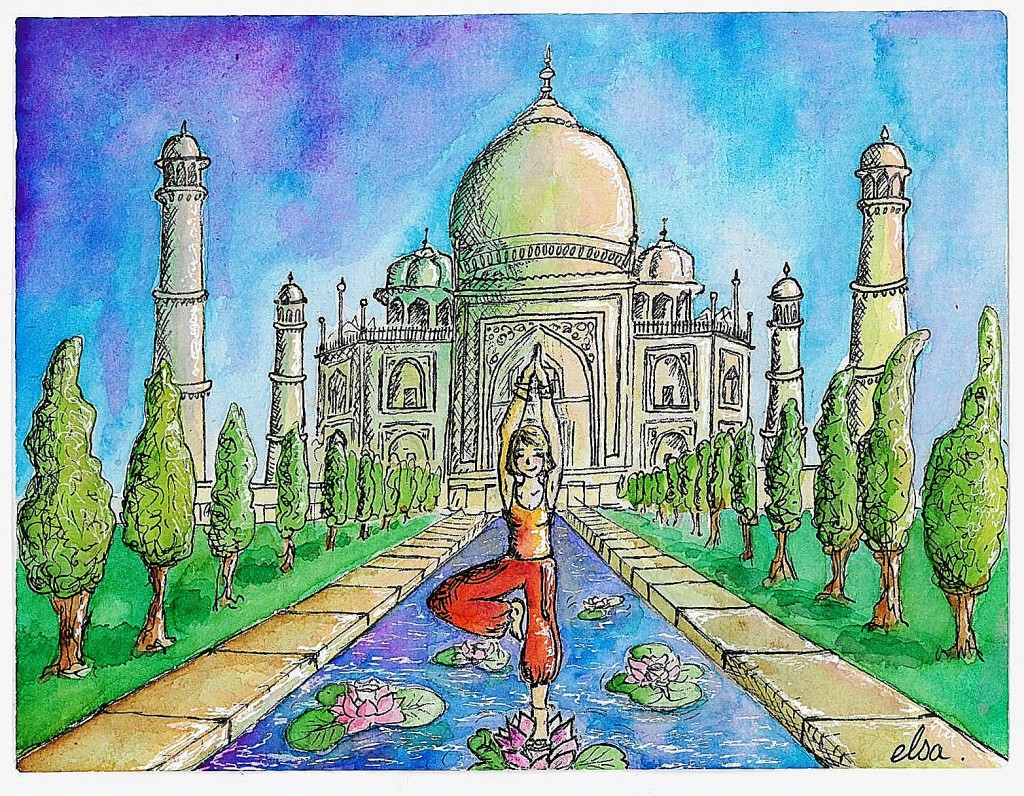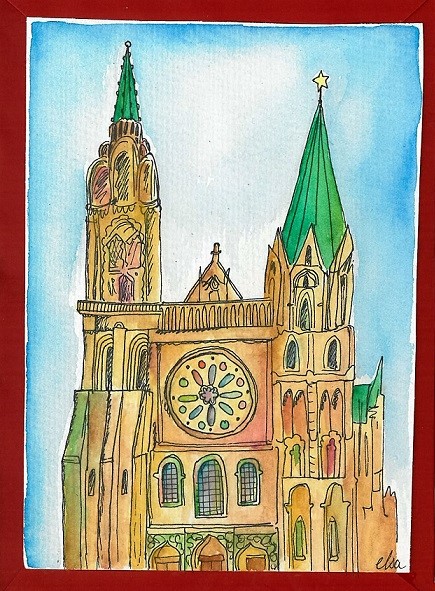
The deadline for posting expired a while ago, I knooow. But I had my master applications and stuff which were time-consuming… and most importantly, Uni has been killing me –again-. No seriously, even though I am super enthusiastic about what I learn, I still have to get use to this new system where you have to submit things all the time. Anyway, I said that I would stop to complain about Uni work because after all, I like what I do. =)
Before talking about the precise content of one of my lecture, I’d like to share some experiences of my learning process here.
In my maths class, the first assignment was a group project for which we had to do an oral presentation (Good heavens!) about symmetry. More precisely, we had to show how symmetry was important for our understanding of the world and in which ways it had influenced (and is still influencing) other domains than mathematics such as physics, music, biology, architecture or art…
I let you guess what my parts were… Symmetry in Architecture and Art!
Woohoo Surprise
As usual, I did not manage to K.I.S.S kiss kiss ♪♫ (Keep It Simple, Stupid). I started by look at the wikipedia page about symmetry then, 3 hours later, I was reading a book (massive brick of more than 1,000 pages) about the secret and the mystery of the Taj Mahal. Well, the Taj Mahal is related with symmetry somehow, it is one of the most famous example of bilateral symmetry in architecture (Bilateral or reflectional symmetry is when you can draw a line in middle of an object and when the two halves reflect each other, see the drawing). By the way, the drawing of this article is for one of my friend who made an exchange in India last year.
ANYWAY, I have learnt heaps of stuff about symmetry and I started to be quite big on it, but just thinking about me, speaking in English in front of native speakers frightened me. I wouldn’t know explain why, but for me, it really makes a difference for me whether I speak with natives or international/exchanges students, so that’s why I wasn’t super confident for this presentation.
Eventually, I don’t know how but we did very well! Just before, I felt like fainting and during the presentation, I could see that sometimes the audience couldn’t get everything that I was saying but, as one of my friends told me, in English as long as you really have the intention to be understood, people will understand you. I experience that fact all the time actually 🙂
Now, I’d would to talk about symmetry in itself. It is a massive subject and I won’t even try to cover all of it but I want to talk about some aspects that I found really interesting and made me think a lot. Warning, the next part is a bit indigestible. \0/
You know, usually, when you start a research paper, you often use lam catchphrase like “Nowadays, the technologies are everywhere” of “With the globalization blablabla”. As I begin to get how it works here, I started my essay by: “Observing nature or society, by studying biology or languages, or just by looking at his or her reflection in a mirror, allows one to understand that symmetry is present everywhere and in everything”. At first, it sounds boring but when you think deeply about it, it is striking how symmetry is really everywhere, either in physical object or abstract idea.
For example, in architecture, Symmetry is a concept major in all cultures throughout time and is used as a tool to provide a particular experience to the user and a way for the architect to express particular ideas.
What kind of idea you might want to ask? For example, the reflectional symmetry (the one you can see on the Taj Mahal) is the most common form of system found in architecture. BUT WHY? reflectional symmetry appears to have been historically valued in architecture mainly for aesthetic reason; although a building has to be functional symmetry seems to create shapes that are considered to be harmonious and beautiful, at least to the human eye (Williams 1998). (why?)
Okay, that is maybe common sense, but another theory argues that humans design and create building as in their image. In other words, people are surrounded in nature by symmetrical elements and are themselves symmetrical, thereby influencing the way they design objects, buildings and even cities.
And it is true when you think about it: so many objects that we design are symmetrical like cars, lamps, phone, pretty much anything! That would explain why so many buildings display reflectional symmetry in all cultures and all time periods. Many other different type of symmetry can be observed in both ancient and recent architecture such as chiral symmetry, spiral symmetry, rotation symmetry etc. Each kind of these provides a particular effect to the building and has an impact on the final renderer. For example, the spiral symmetry that can be observed in the Guggenheim Museum in New York is used to symbolise the concept of continuity (William 1999). In short, symmetry provides tools for architects and artist to express their conception of the world but also to create unique experiences for people who admire them (okay, it is a bit too much).
Symmetry is really something that we take for granted but when you start to challenge your imagination and try to imaging the world without symmetry, it can be very very confusing (and interesting). To begin with yourself, it you weren’t symmetrical, what would you look like?
However symmetry as the only way of make thing beautiful is an idea that has been challenged in the 21st century but I won’t enter in the details (just look a picture at another Guggenheim Museum in Bilbao, Spain, you will understand what I am talking about).
Okay, now I spent too much time on Architecture and I don’t feel brave enough to do the job for the Art. I will just say that mathematics and Art in particular can influence art. For my oral presentation, I focused my analyse on Escher (Dutch artist, born 1898 and died 1972) who was inspired by nature and in some cases architectural pieces that contained symmetry (la boucle est bouclée). He was very famous for his tessellations (a tessellation is when a shape is repeated over and over again covering a plane without any gaps or overlaps, and obviously, it contains symmetry). Since tessellations are unbounded objects, drawing them was his way to express his idea of infinity. Eventually, I think that Esher was interested in describing the reality through the mathematics with symmetry but also with other mathematical concepts. Voilà voilà.
When I did the research about art, I realised that symmetry plays a big role in my own drawings. Is it because I draw my inspiration from nature which has symmetrical elements as I said? Or is it because I observe society which is based on symmetrical systems? Or is it because I have been learning that symmetry is what gives harmony and beauty to the world though my education?
Is it really the case or is it another social construction?
I don’t know but I let you reflect upon it.
Cheers,
Elsa Symmetrical Lioness.
PS : I have just finished The Pillars of the Earth written by Ken Follet. It is a story about power and faith, about obstacles and betrayal, about victories and courage, about war and peace… It took me half the book (= more than 500 pages) to be on it but then, I have been obsessed with this it. Besides, all this matters of cathedral has inspired me. Here is the Cathedral of Chartres, another example of symmetry in architecture btw 🙂



MAGNIFIQUE DESSINS ELSA!!!! <3